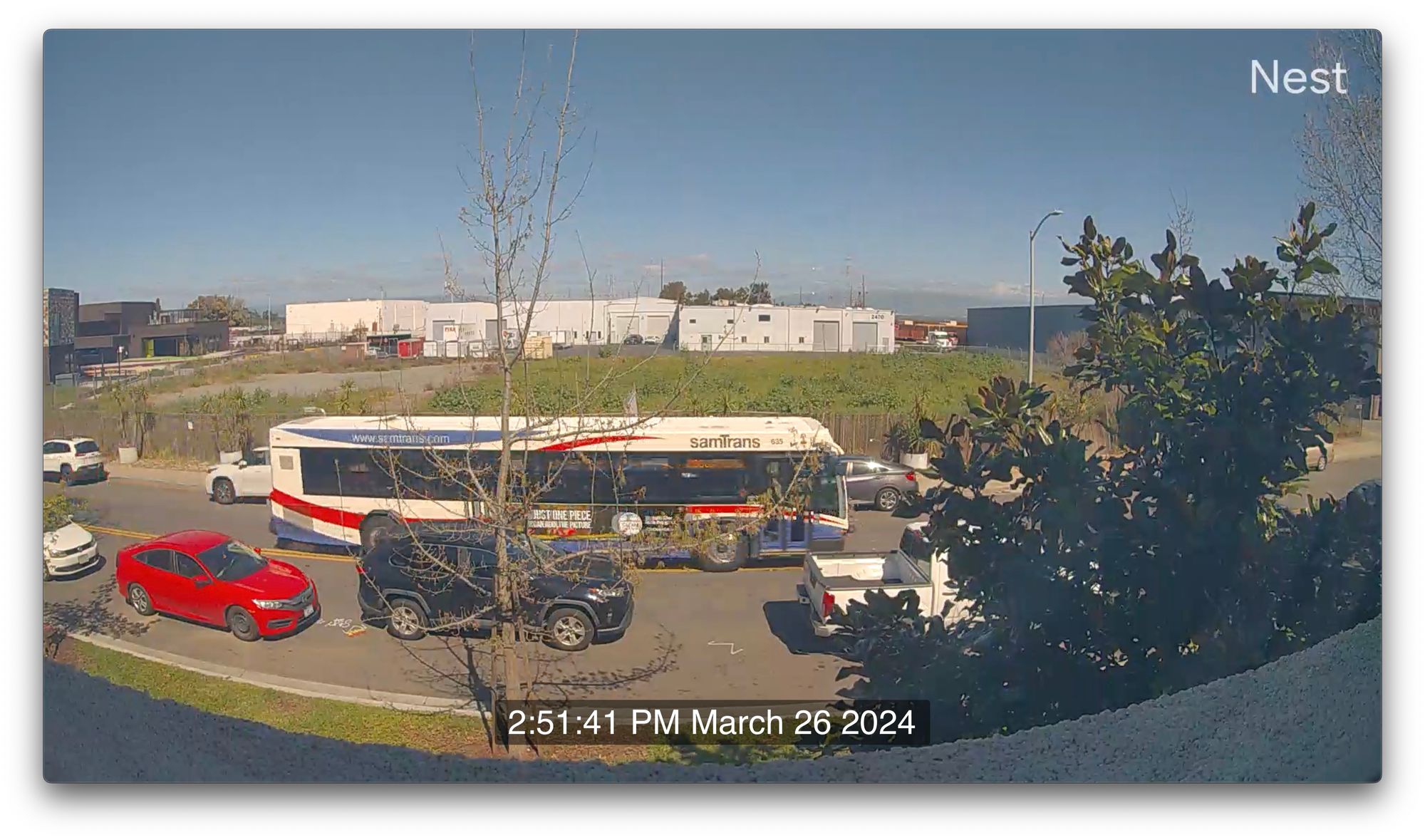A number of stakeholders have identified that Pulgas Ave southbound between Bay Rd and Weeks St is regularly being blocked by cars queueing to pick up food and items at the Ecumenical Hunger Program. In this post, I write about the current problems.
Ever since I moved to East Palo Alto during the pandemic, I have noticed long car lines up to 4 days a week on Pulgas Ave north of the Ecumenical Hunger Program (EHP). EHP provides food, house supplies, and more for free to the regional community. They are open on Mondays - Thursdays from 9am - 12pm, 2pm - 5pm (source: EHP staff). During the pandemic, EHP shifted to a car pick up model where cars queue up to pick up food and supplies, as opposed to the pre-pandemic "store" model where cars park and people walk in to pick up supplies.
Here is an annotated graphic I have made to visualize the road blocking. The cars are not to scale; imagine around 27 cars blocking Pulgas Ave (west side) and forcing all traffic to pass on the east side.

Problems
A number of local agencies and business have filed complaints because the 2 lane road (1 lane in each direction) effectively becomes a 1 lane road open on the northbound direction. Complaints have come from the East Palo Alto Police Department, Menlo Park Fire District, SamTrans, Borrmann's Steel, Montage HOA neighbors, and more (source: EHP staff).
Below are some of the problems I see with the status quo. I have attached video recordings looking east. You will see cars queueing up from left to right (southbound) along Pulgas Ave, and cars passing on the opposite side of Pulgas Ave (northbound).
Estimated 228 Vehicles Affected by Pulgas Ave Southbound Blockage Per Day
The queue length becomes a downward-spiraling cycle. Cars that are not going to EHP are stuck waiting in the line. This increases the queue length which makes it harder to exit the queue since there are now more cars to pass. Because the queue length is longer, more cars get stuck in the line because it is harder for them to pass. Those new cars being stuck in the line creates an even longer queue.
I estimated around 228 vehicles (not going to EHP) that are affected by the Pulgas Ave southbound blockage per day.
For analysis of calculations, see Appendix: Calculation 2 at the bottom.
SamTrans buses get stuck and delayed
SamTrans's Route 280 (~every 1 hour) and Route 296 (every 20 min) get stuck behind cars waiting on Pulgas Ave southbound. I have seen this personally on a weekly basis as 4 buses (3 Route 296's and 1 Route 280) get stuck behind the queue. They wait for a few minutes before finding an opportunity to pass 10+ cars by accelerating on the opposite lane. This delays the bus schedule and dissuades people from taking SamTrans buses. This leads to more car dependency and increased traffic.
Note: SamTrans Route 81 also uses Pulgas Ave southbound and is not affected since it runs in the morning before EHP opens.
Cars are idling and polluting the air
When I walk past the 10 - 30 cars queuing, I can sometimes smell the exhaust. It seems that cars might wait for 30 minutes before picking up their items. This is wasting gas and polluting the air. Given that idling uses up to 1/2 gallon of fuel per hour (source: South Carolina Department of Health and Environmental Control), a car waiting for half an hour may spend about 1/4 gallon of fuel, or around $1.65 at current gas price levels. Assuming they are picking up $40 worth of food, this is around 4% of the value burned off (literally).
Heavy Trucks Speed on Opposite Side of Pulgas Ave to Pass and Pose a Threat to Pedestrians
Heavy trucks (e.g. those for Borrmann's Steel located across the street from EHP) regularly have to pass the EHP vehicle queue. This poses a threat to pedestrians, some of whom cross Pulgas Ave to EHP and would not be expecting traffic coming in the opposite direction.
Menlo Park Fire District vehicles get stuck
Menlo Park Fire has an entrance across the street from EHP, and the cars blocking on Pulgas Ave would block long fire trucks and vehicles from ingressing and egressing from their facility.
Unable to Handle Further Traffic Load
If Pulgas Ave is unable to handle current traffic load while most of the large lots around EHP are currently vacant, how will Pulgas Ave serve future increased traffic?
- Traffic from the Colibri Commons (965 Weeks) affordable housing project which adds 136 apartments (mostly larger 3 to 4 bedroom units).
- Traffic from the new proposed East Palo Alto Library across the street to the northeast from EHP.
- Traffic from the in-progress Ravenswood Business District Specific Plan Update which may add either 2.8 million sq. ft. of office space and 1350 housing units, or 3.2 million sq. ft. of office space and 1600 housing units.
Learnings from Site Visit
I met with EHP's executive director Lesia and EHP staff members Rodia Grant and Nevida Butler last week in order to better understand the current traffic conditions. I had scheduled the meeting because this is planned to be a Public Works & Transportation Commission agenda item on our April 17, 2024 at 5:30pm meeting.





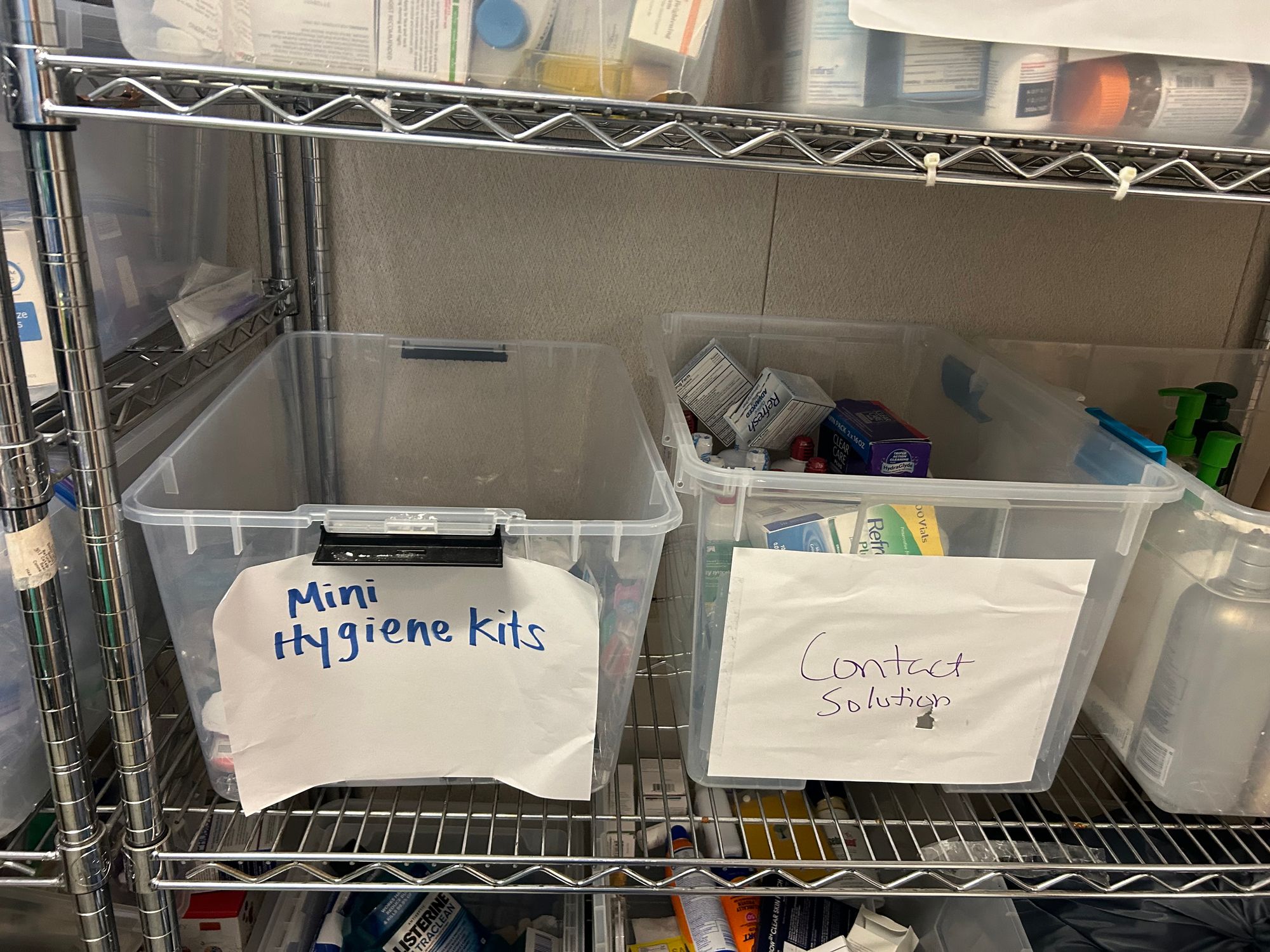
Here are some key learnings:
- EHP distributes more than just food; EHP also distributes furniture, appliances, clothing, hygiene kits, and more.
- EHP accepts donations. Logistically, vehicles pull in through the southern gate and park to make donations.
- Vehicles pull in through the northern gate to pick up food and items.
- On especially busy days, 2 lines are formed in parallel to handle more throughput.
- Not everyone arrives by car. One EHP staff estimated around 1/4 of people arrive by foot (which could involve taking a bus or biking, which is unknown since staff just sees them enter by foot).
- EHP sends out someone (I think his name is Greg?) to do traffic control. EHP has been thinking of adding a second person to handle what essentially becomes a "construction lane" 1-lane road. They would need someone ensuring only one direction of flow at a time on the northbound of Pulgas.
- EHP is looking for a solution for the short term (~2 years from now). They have plans to move back to a "free grocery store" model, which would revert back to the pre-pandemic model where people park and walk in, rather than queue up in a car line for pick up.
- It seems that some of the longest lines are right around the 2pm opening time, where cars arrive early to queue up so they can get their items faster. While the gates are still closed, the queue increases in length which causes the most backup.
- EHP purchased this site in the early 2000's. They used to be at Whisky Gulch before the redevelopment to Four Seasons and office space.

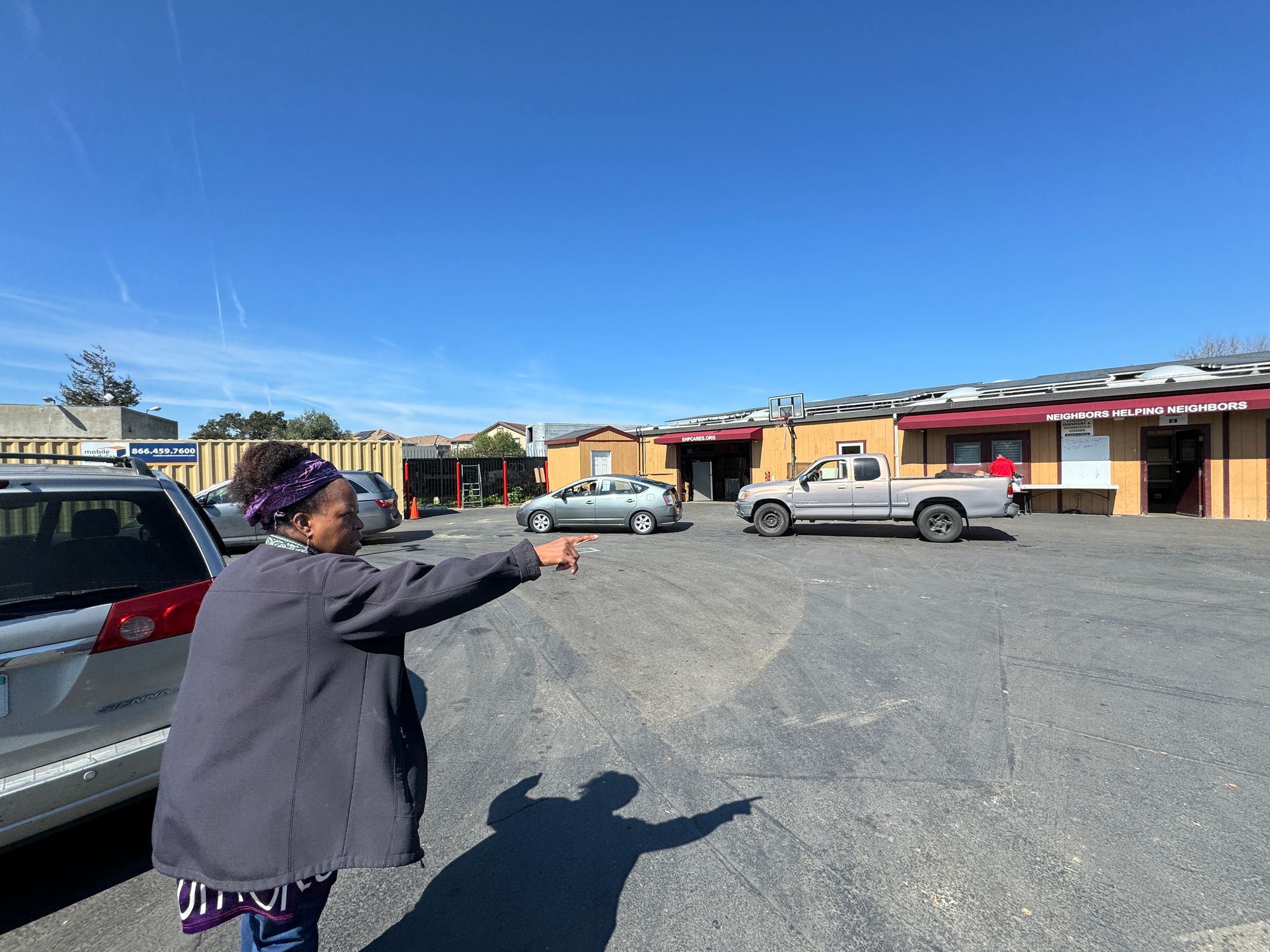
Potential Solutions
This part is currently work in progress. Last week we had a meeting with EHP (LaKesha) and the city's public works engineers to brainstorm some ideas while listening to feedback from EHP. I have volunteered to go with EHP this week to talk to neighbors at 1103 Weeks and on the southeast of Weeks & Pulgas Ave to get some feedback on a proposed alternative traffic flow idea.
I will plan to write more updates on potential solutions in a separate post, in order to keep this post focused on identifying the current problems.
Appendix: Calculations
In order to keep the main blog content focused, I have moved calculations to this bottom section for readers who are interested in the math.
Calculation 1. Number of Cars Queued on Pulgas Ave: 27 Cars
Given that the standard for a parallel parking is 22 feet in length, a 600 linear foot stretch from Bay Rd to EHP along Pulgas Ave translates to roughly 600 / 22 = 27 cars on Pulgas Ave during the busier times. The problem is that there are 27 cars blocking traffic on Pulgas Ave, and the question is how do we mitigate or move all 27 cars so that Pulgas Ave remains clear.
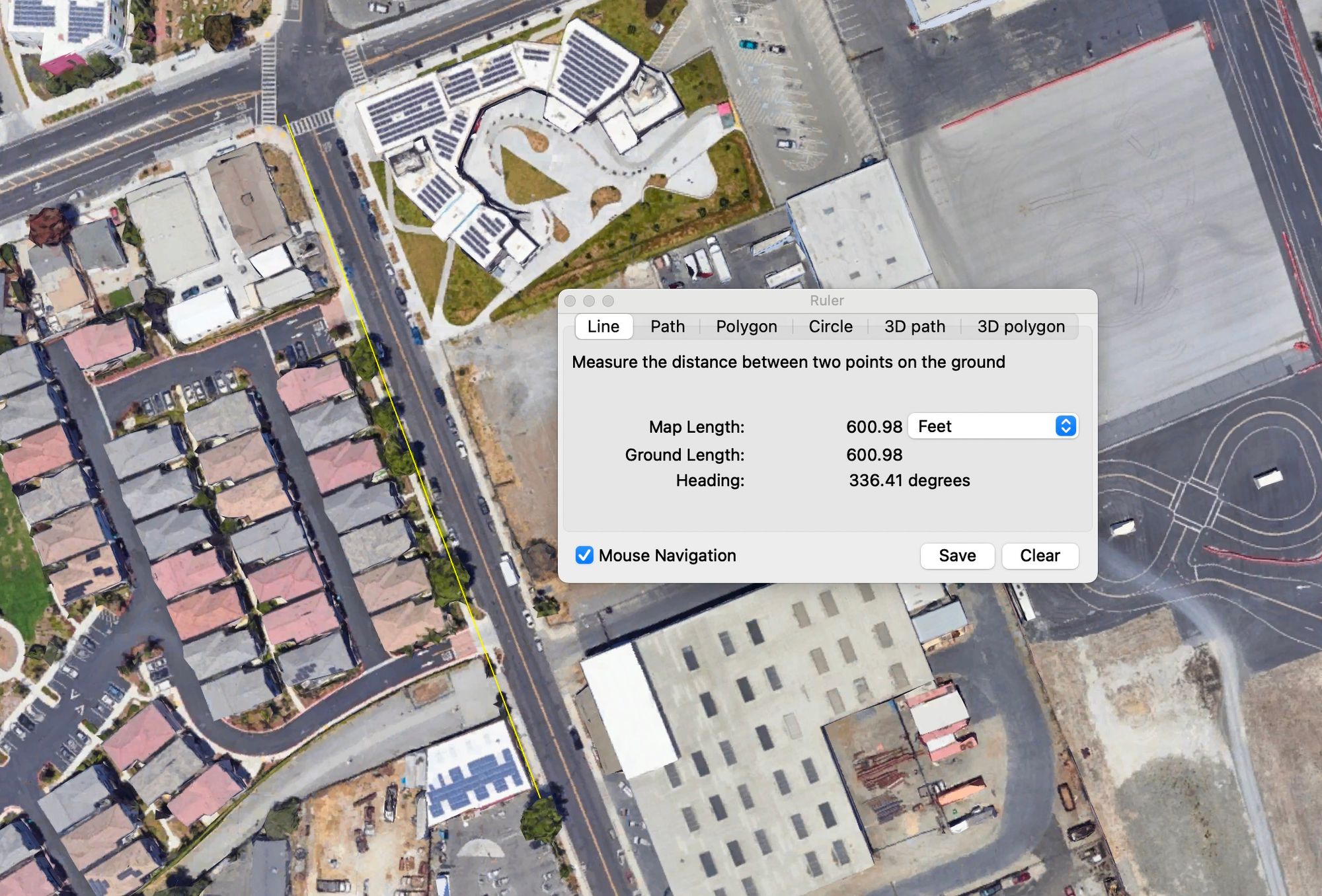
Calculation 2. Number of Vehicles Affected by Car Blockage
To estimate the number of cars affected, I used the East Palo Alto Mobility Study which is the most recent study we have on traffic counts.
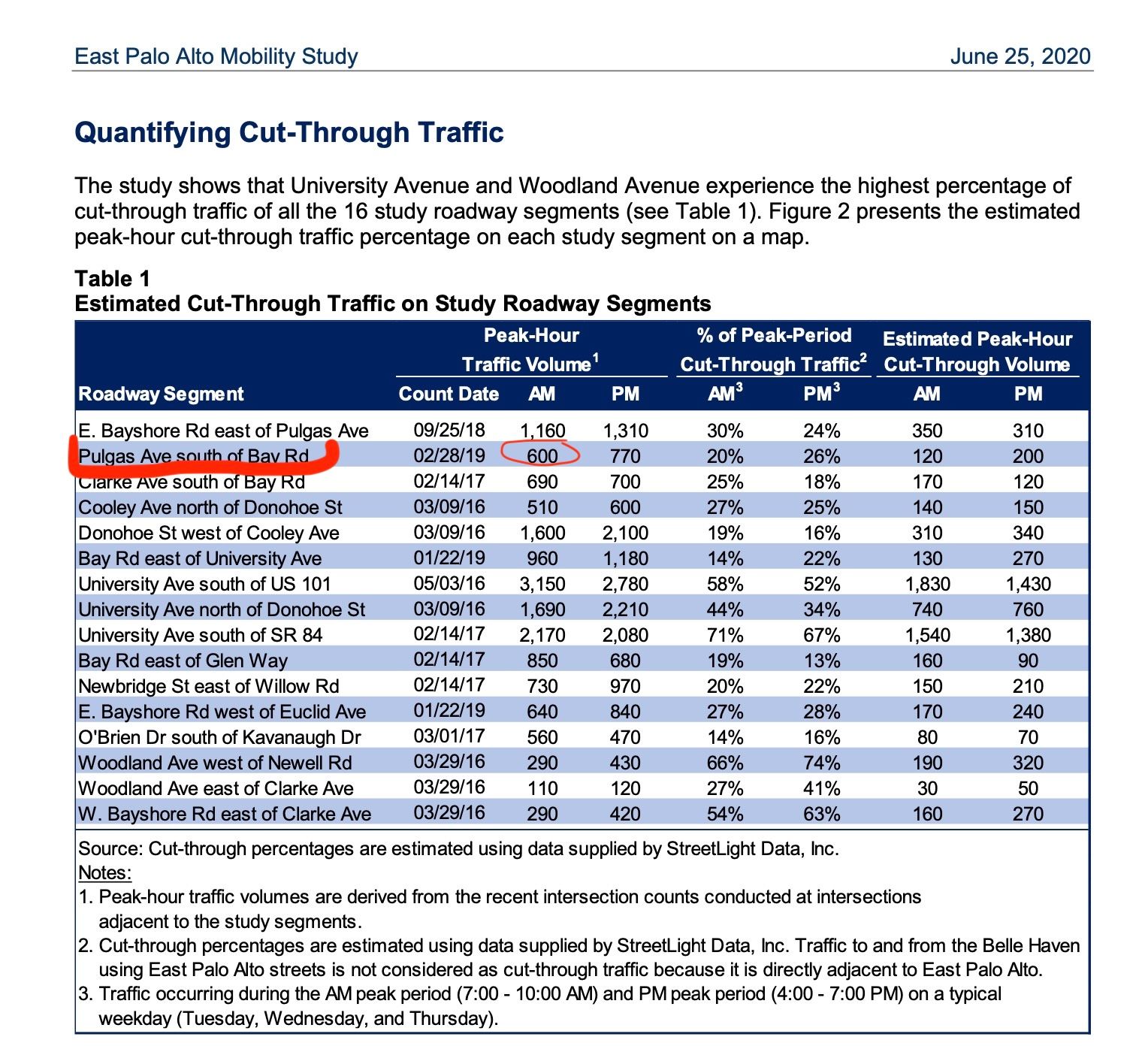
I estimate 100 vehicles affected by Pulgas Ave blockage in southbound direction in the mornings. The East Palo Alto Mobility Study from 2020 (prepared by Hexagon) measured 600 cars during AM peak-hour traffic volume on Pulgas Ave south of Bay Rd, on February 28, 2019 (Page 5). Unfortunately, the study did not measure off-peak hour traffic, but if we assumed around 1/4 of traffic during off-peak, this would imply 150 vehicles per hour using Pulgas Ave in both directions. Assuming 1/3 of this traffic is going southbound (to get to job centers on the Peninsula), this is 50 vehicles per hour. If we assume that the morning pick up times are most severe for 2 hours, then at 50 vehicles per hour, this multiplies to 100 vehicles affected in the mornings.
I estimate 128 vehicles affected in the afternoons. The Mobility Study measures 770 peak-hour traffic volume. If we again assume 1/4 of traffic during off-peak afternoon, this equates to 192 vehicles per hour using Pulgas Ave in both directions. Assuming 2/3 of this direction is northbound (to get back to the East Bay), this is 128 vehicles per hour going northbound and 64 vehicles per hour going southbound. The northbound vehicles would not be directly affected because the blockage is on the southbound side of Pulgas Ave, so we will consider these 64 vehicles going southbound being affected. If we assume the afternoon pick up times are most severe for 2 hours, then at 64 vehicles per hour, this multiplies to 128 vehicles affected in the afternoons.
I reach 228 vehicles affected per day by EHP blockage by summing up morning and afternoon vehicles affected. Most of these vehicles are not cut through, meaning they are East Palo Alto residents being affected. This is because the Mobility Study measures between 20% to 26% of AM and PM peak-period traffic being cut-through. If we assume a similar ratio during off-peak times, this equates to around 169 to 182 vehicles being East Palo Alto vehicles affected.
